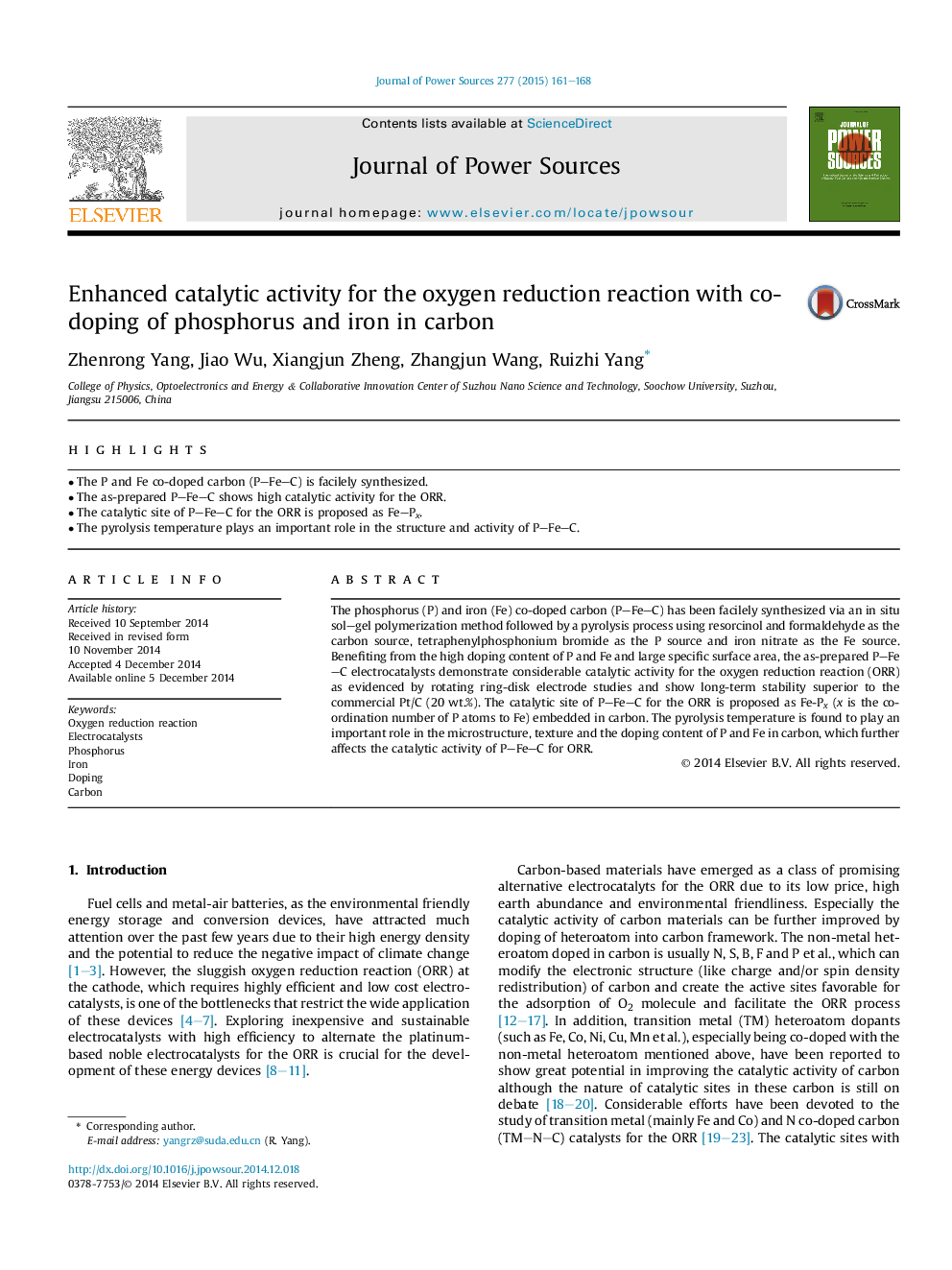| کد مقاله | کد نشریه | سال انتشار | مقاله انگلیسی | نسخه تمام متن |
|---|---|---|---|---|
| 1286797 | 1497955 | 2015 | 8 صفحه PDF | دانلود رایگان |
• The P and Fe co-doped carbon (P–Fe–C) is facilely synthesized.
• The as-prepared P–Fe–C shows high catalytic activity for the ORR.
• The catalytic site of P–Fe–C for the ORR is proposed as Fe–Px.
• The pyrolysis temperature plays an important role in the structure and activity of P–Fe–C.
The phosphorus (P) and iron (Fe) co-doped carbon (P–Fe–C) has been facilely synthesized via an in situ sol–gel polymerization method followed by a pyrolysis process using resorcinol and formaldehyde as the carbon source, tetraphenylphosphonium bromide as the P source and iron nitrate as the Fe source. Benefiting from the high doping content of P and Fe and large specific surface area, the as-prepared P–Fe–C electrocatalysts demonstrate considerable catalytic activity for the oxygen reduction reaction (ORR) as evidenced by rotating ring-disk electrode studies and show long-term stability superior to the commercial Pt/C (20 wt.%). The catalytic site of P–Fe–C for the ORR is proposed as Fe-Px (x is the coordination number of P atoms to Fe) embedded in carbon. The pyrolysis temperature is found to play an important role in the microstructure, texture and the doping content of P and Fe in carbon, which further affects the catalytic activity of P–Fe–C for ORR.
Journal: Journal of Power Sources - Volume 277, 1 March 2015, Pages 161–168
